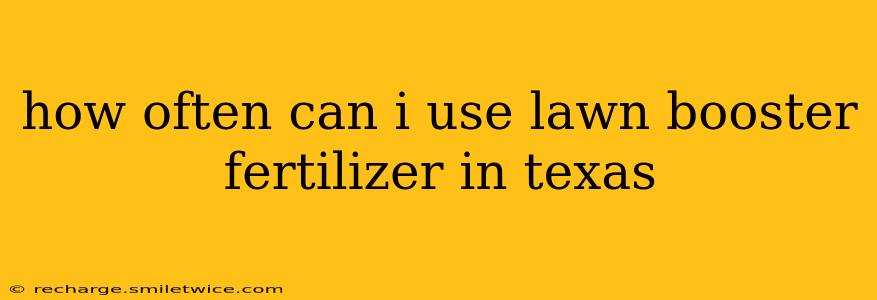Texas boasts a diverse range of climates and soil types, meaning the ideal lawn fertilizer application schedule isn't one-size-fits-all. Understanding your specific grass type, soil conditions, and the type of lawn booster you're using is crucial to achieving a healthy, lush lawn without causing damage. Over-fertilizing is a common mistake that can harm your lawn, leading to nutrient burn, weed growth, and environmental problems.
What Type of Grass Do You Have?
This is the most important factor influencing fertilizer application frequency. Texas lawns often feature:
- Bermuda grass: A warm-season grass thriving in hot, sunny conditions.
- Zoysia grass: Another warm-season grass known for its drought tolerance.
- St. Augustine grass: A popular warm-season choice, but susceptible to certain diseases.
- Fescue grasses: Cool-season grasses more common in higher elevations or cooler microclimates within Texas.
Each grass type has different nutrient needs and growth cycles, impacting how often you should fertilize. Warm-season grasses generally require more frequent feeding during their active growing period (spring and summer), while cool-season grasses benefit from fertilization in the fall and early spring.
What's in Your Lawn Booster?
The composition of your fertilizer is key. Look for the NPK numbers (Nitrogen, Phosphorus, Potassium) on the package. These numbers indicate the percentage of each nutrient present. A high nitrogen content promotes lush green growth, while phosphorus and potassium support root development and overall plant health.
Slow-release fertilizers release nutrients gradually over time, reducing the frequency of application compared to fast-release options. Fast-release fertilizers provide a quick boost but may require more frequent applications. The label on your specific lawn booster will provide instructions on application rates and frequency.
What are the Soil Conditions?
Soil testing can provide valuable insights into your soil's nutrient levels. A soil test will identify deficiencies and guide you on the appropriate fertilizer type and application schedule. This is particularly important in Texas, where soil conditions can vary significantly across regions. Contact your local agricultural extension office for soil testing information and recommendations.
How Often Should I Fertilize Warm-Season Grasses in Texas?
For warm-season grasses like Bermuda, Zoysia, and St. Augustine, a general guideline is to fertilize 3-4 times per year, focusing on the active growing season (spring and summer). However, always follow the instructions on your specific fertilizer product. Avoid fertilizing during periods of drought or extreme heat.
How Often Should I Fertilize Cool-Season Grasses in Texas?
Cool-season grasses in Texas might only need 1-2 fertilizations per year, typically in the fall and early spring. Again, check the product label for precise recommendations.
What are the Signs of Over-Fertilization?
- Excessive growth: Rapid, uncontrolled growth can be a sign of too much nitrogen.
- Burned tips: Brown or yellowing leaf tips indicate nutrient burn.
- Weed proliferation: Excess nutrients can promote weed growth.
- Runoff: Fertilizer runoff pollutes waterways and harms the environment.
When is the Best Time of Year to Fertilize My Lawn in Texas?
The best time to fertilize depends on your grass type:
- Warm-season grasses: Apply fertilizer in spring (after the last frost) and again in early summer. A third application in late summer can be beneficial, but avoid fertilizing too close to fall.
- Cool-season grasses: Fertilize in early fall and again in early spring.
By understanding your grass type, soil conditions, and the specific instructions on your lawn booster product, you can create a tailored fertilization schedule to achieve a beautiful and healthy Texas lawn without harming it or the environment. Remember, consulting with your local agricultural extension office is always a great resource for personalized advice.
